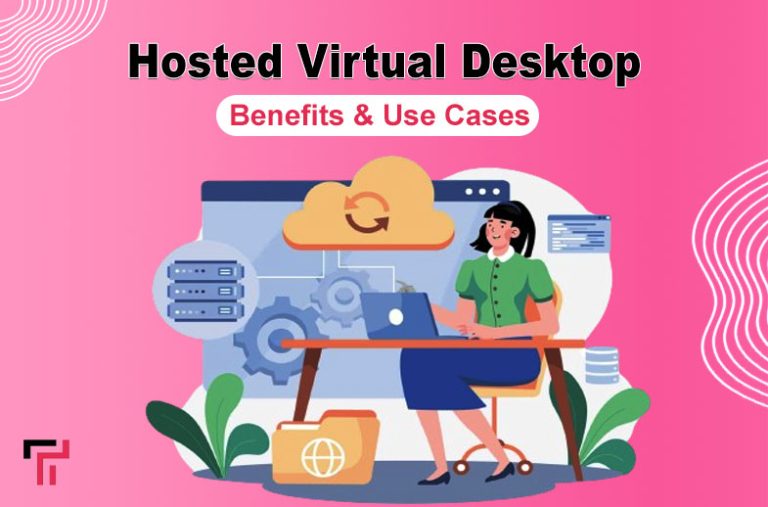Have you ever thought that you could work remotely for a company according to your own schedule? It is possible these days as technology is continuously evolving. Thanks to advanced technologies, HVD or Hosted Virtual Desktop is here to help.
These are the virtual desktops that allow you to work from your laptop remotely without going to the office. This article is going to provide comprehensive knowledge about Hosted Virtual Desktops, their benefits and use cases. So, stay tuned with us.
What is HVD (Hosted Virtual Desktop)?
HVD (Hosted Virtual Desktop) is a virtual desktop developed on Cloud-based platforms to provide remote desktop access to companies. Cloud based companies manage these servers and provide remote desktop access to companies. Employees do not need to manage anything as they get a smooth virtual desktop for work.
They can also install multiple productivity applications in it as they used to install in a physical desktop system.
These desktops can be accessed from Tablets, Laptops, or Smartphones, from which employees can work accordingly. They will feel the same as traditional desktops while working and just require login credentials in order to enter the system.
Difference Between HVD and VDI
Both of these are desktop virtualization methods to provide virtual access to users with installed operating systems on a particular server. HVD is hosted by a specific cloud service and provides services to multiple companies. Users may feel the same as they are working on the local machines.
Companies are not responsible for managing and maintaining these systems, as it is the responsibility of the service providers. Users can easily access their systems, and these are extremely difficult to hack.
VDI is another virtualization technique in which the company built its own virtual desktop system, which is located inside the building instead of other cloud-based servers. Companies need to build their own IT infrastructure to host virtual machines. It delivers more control but requires a great responsibility of maintaining, managing and securing their data centre.
Benefits of HVD or Hosted Virtual Desktop
There are multiple benefits of using hosted virtual desktops, as employees can access multiple business applications from anywhere they want. Its major benefits include cost-effectiveness, easy maintenance, smooth user experience, and improved flexibility for remote work.
1. Low Operational Cost
Companies can save a lot of money by implementing these systems, as they do not need to maintain and upgrade the hardware. They can easily install and remove these HVDs according to their requirements. Enterprises can only pay for those HVDs that are in use and pay to service providers accordingly.
2. Easy Upgradation
The virtual desktop provider is completely responsible for managing and maintaining these virtual desktops. The security updates and other applications are installed only one time rather than upgrading multiple times.
3. Enhanced Security
These systems are highly secure and extremely hard to hack as the cloud service providers are responsible for delivering the virtual desktops securely. These desktops come up with robust data security and the data is stored on a centralized location rather than on individual computers.
HVD Use Cases
There are multiple uses for these virtual desktops from which users can access their desktops anywhere they want. Here are the major uses of it:
1. Virtual Access
These systems allow employees to open their Laptops and work for the company virtually according to their own schedule. It helps in increasing the overall productivity and collaboration with other colleagues to work collectively on a specific task. This helps companies enhance their workflow, and overall efficiency and remain competitive in the market.
2. Desktop Management
HVD offers managed desktop environments to users in which they can easily install OS and other productivity applications according to their requirements. IT teams can easily manage these systems, its applications and take security measures from one location.
Users can easily manage their productivity application on these systems and work effectively without any interruptions. All the data in it is saved automatically, which eliminates the need to save it manually.
3. Business Continuity
These systems are the most effective solution for business continuity via providing remote access to virtual desktops. Businesses can easily avoid data loss and recover their data instantly, as it is saved in a remote location which is safe from any disaster.
Many large-scale companies are adopting these systems in order to make their data safe and reduce the impacts of unexpected events.
Pros and Cons of HVD Services
| Pros | Cons |
| Users can access these systems from anywhere. | Depends on Internet Connectivity. |
| Eliminate the risk of data breaches. | May cause lagging issues. |
| Cost Effective Solution. | Offers limited customization options. |
| East to manage the desktops. |
Conclusion
HVDs are robust solutions for those companies who want to increase productivity, security and flexibility in their workflows. These managed desktop systems are highly beneficial in delivering remote access, and effective desktop management.
These are cost-effective and secure solutions from which the data will never be removed or accessed by any hacker. Companies can modernize their operations, optimize productivity and remain competitive among other enterprises by adopting these systems.
FAQs
What are the benefits of HVDs?
There are multiple benefits of these systems such as cost effectiveness, enhanced security, easy desktop management, and more.
Does the data remain secure in these systems?
Yes, these systems come up with robust security measures which cannot be easily hacked by anyone.
How are these systems maintained?
The service providers offer 24/7 customer support and regularly maintain these systems and their performance.







